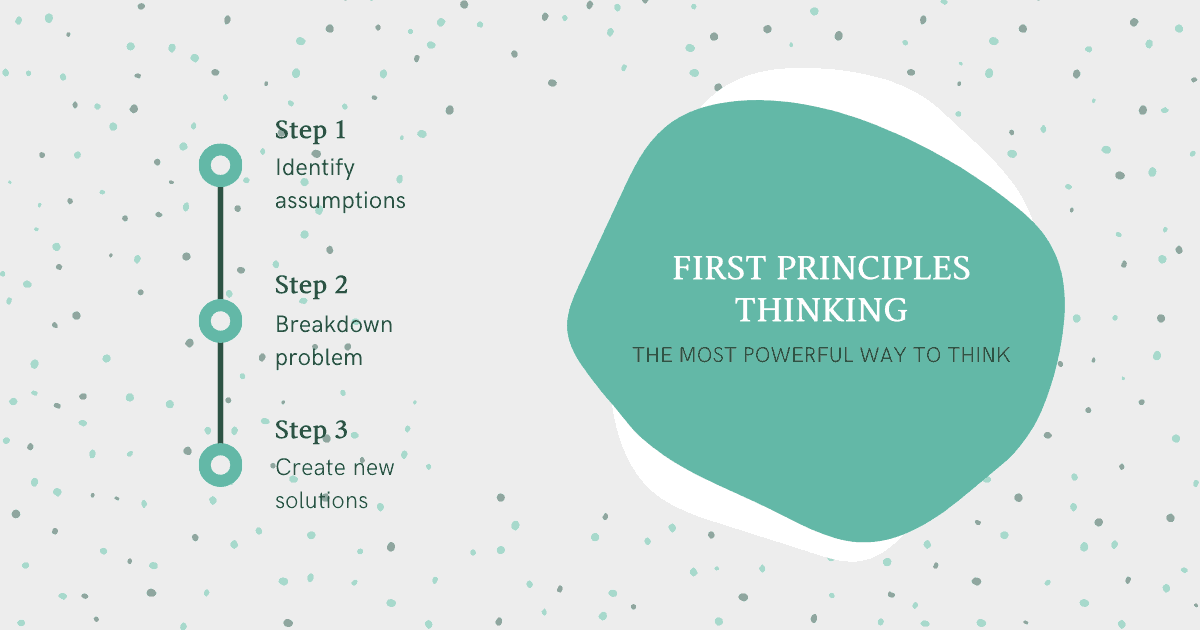The most powerful way to think.
First principles thinking is a problem-solving approach that involves breaking down complex problems into their most basic components or "first principles" and then reconstructing solutions from the ground up based on those foundational elements.
The idea of first principles thinking dates back to ancient Greek philosophy and was championed by luminaries such as Aristotle and Archimedes. More recently, the approach has been popularized by entrepreneurs and innovators such as Elon Musk, who has used it to drive breakthroughs in fields ranging from space exploration to electric cars.
First principles thinking involves identifying the fundamental truths or building blocks of a problem or idea, questioning assumptions, and avoiding reliance on pre-existing solutions or established dogma. By starting from first principles, thinkers can often arrive at more innovative and effective solutions than by simply iterating on existing ideas.
For example, instead of accepting the assumptions and limitations of current battery technology, a first principles approach might start by asking questions like "What are the fundamental properties of a battery?" and "What materials and processes could we use to create a better battery from scratch?" This kind of thinking can lead to breakthroughs and innovations that might have otherwise been overlooked.
The following are the general steps involved in using the first principles thinking approach:
-
Identify the problem or idea: Define the problem or idea you want to tackle and ensure that you have a clear understanding of it.
-
Break down the problem into its most basic components: Break the problem down into its most basic parts, and try to identify the fundamental elements that make up the problem. This could involve identifying the key factors that affect the problem or identifying the underlying assumptions that people make about the problem.
-
Question assumptions: Question the assumptions that people make about the problem, and try to identify which of these assumptions are essential and which can be challenged or eliminated. Look at the problem from different perspectives to identify any biases or preconceptions that may be clouding your understanding of the problem.
-
Reconstruct solutions from the ground up: Use the fundamental elements that you identified earlier to reconstruct solutions from the ground up. Instead of relying on existing solutions or approaches, try to develop new solutions that are based on first principles.
-
Test and refine the solution: Once you have developed a solution based on first principles, test it and refine it as necessary. Be open to feedback and iterate on your solution until you arrive at a workable and effective solution.
By following these steps, you can use first principles thinking to break through barriers and develop innovative solutions to complex problems.
